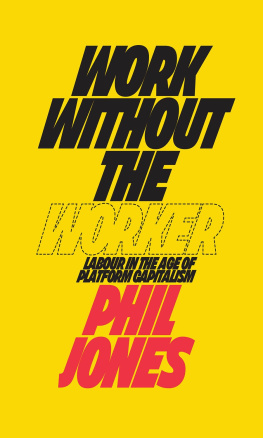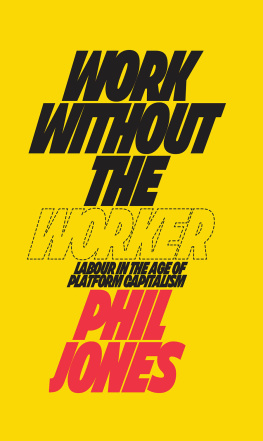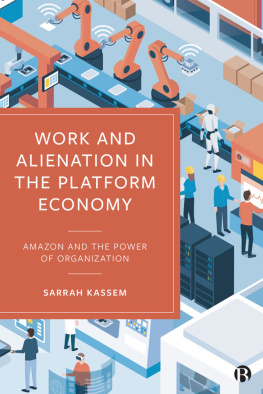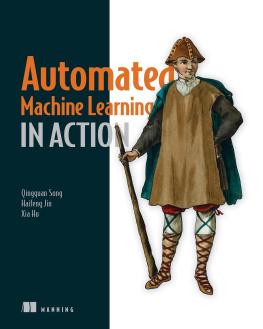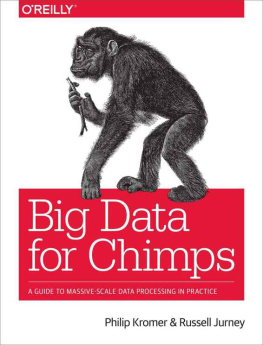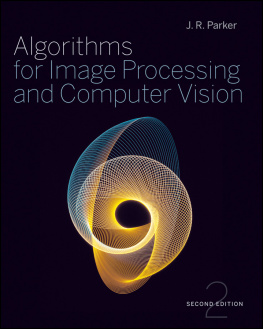Phil Jones - Work Without the Worker
Here you can read online Phil Jones - Work Without the Worker full text of the book (entire story) in english for free. Download pdf and epub, get meaning, cover and reviews about this ebook. year: 2021, publisher: Verso, genre: Politics. Description of the work, (preface) as well as reviews are available. Best literature library LitArk.com created for fans of good reading and offers a wide selection of genres:
Romance novel
Science fiction
Adventure
Detective
Science
History
Home and family
Prose
Art
Politics
Computer
Non-fiction
Religion
Business
Children
Humor
Choose a favorite category and find really read worthwhile books. Enjoy immersion in the world of imagination, feel the emotions of the characters or learn something new for yourself, make an fascinating discovery.
- Book:Work Without the Worker
- Author:
- Publisher:Verso
- Genre:
- Year:2021
- Rating:4 / 5
- Favourites:Add to favourites
- Your mark:
Work Without the Worker: summary, description and annotation
We offer to read an annotation, description, summary or preface (depends on what the author of the book "Work Without the Worker" wrote himself). If you haven't found the necessary information about the book — write in the comments, we will try to find it.
The brutal truth behind our automated futures and the new world of work
We are told that the future of work will be increasingly automated. Algorithms, processing massive amounts of information at startling speed, will lead us to a new world of effortless labour and a post-work utopia of ever expanding leisure. But behind the gleaming surface stands millions of workers, often in the Global South, manually processing data for a pittance.
Recent years have seen a boom in online crowdworking platforms like Amazons Mechanical Turk and Clickworker, and these have become an increasingly important source of work for millions of people. And it is these badly paid tasks, not algorithms, that make our digital lives possible. Used to process data for everything from the mechanics of self-driving cars to Google image search, this is an increasingly powerful part of the new digital economy, although one hidden and rarely spoken of. But what happens to work when it makes itself obsolete. In this stimulating work that blends political economy, studies of contemporary work, and speculations on the future of capitalism, Phil Jones looks at what this often murky and hidden form of labour looks like, and what it says about the state of global capitalism.
Let Phil Jones be your guide to the darkest underbelly of work under digitized capitalism, where tech barons surveil workers every move and sell their clicks for profit, and the job falls apart but we work more all the time. A beautifully written call to arms to stop this miserable future before it comes for all of us. --Sarah Jaffe, author of Work Wont Love You Back
In this fast-paced and exciting read, Phil Jones explores the hidden abodes of the digital economy, where the worlds surplus workers label images, moderate content, and teach algorithms how to identify common house pets, all for a few cents an hour. /Work without the worker/ explores how dispossessed microworkers might band together to spearhead a global movement for free-time and material security. --Aaron Benanev, author of Automation and the Future of Work
Takes readers to the hidden abode of production of artificial intelligence: a world of precarious, highly exploited, and onerous microwork increasingly performed in the slums, prisons, and refugee camps of sclerotic post-crisis capitalism. With an incandescent urgency, Jones argues that such digitally fragmented piecework threatens livelihoods of all sorts, but also that it offers a tantalizing potential for a world beyond wage labor -- if we can fight for it. --Gavin Mueller, author of Breaking Things at Work
Beneath the noisy sphere of autonomous robots and smart assistants, Jones clearly and patiently reveals the hidden abode of underpaid, overworked, and insecure labourers that underpin our digital society. This is an essential guide to an often invisible world. Nick Snricek, author of Platform Capitalism
Phil Jones is a researcher for the think tank Autonomy. He regularly writes for publications such as the LRB, the Guardian, the New Statesman and Novara Media.
Phil Jones: author's other books
Who wrote Work Without the Worker? Find out the surname, the name of the author of the book and a list of all author's works by series.

